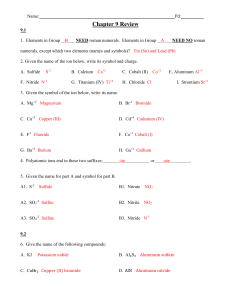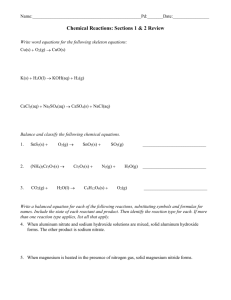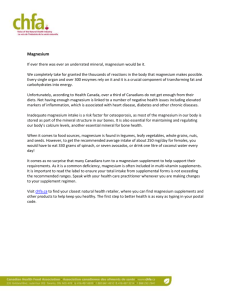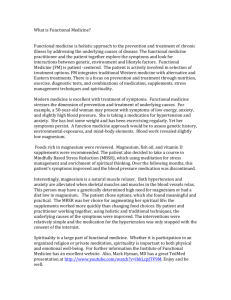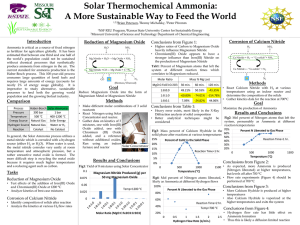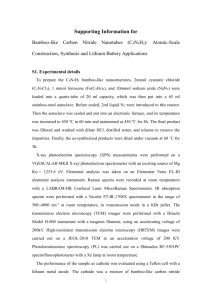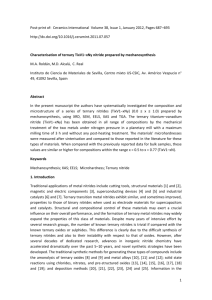ProbSet6_7
advertisement
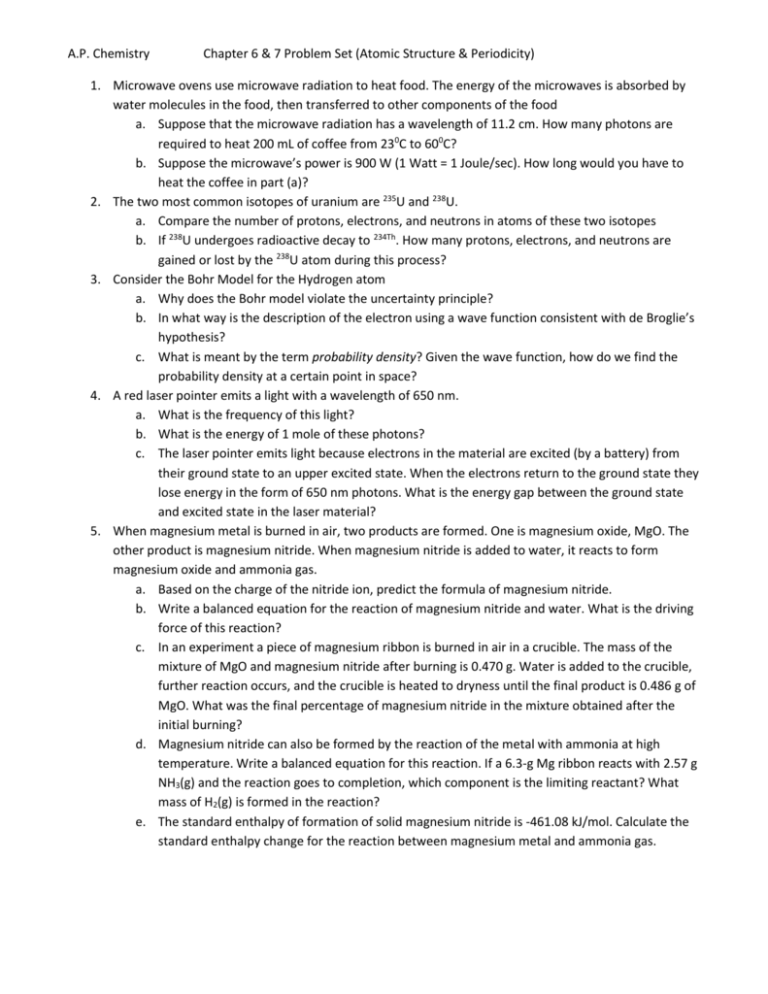
A.P. Chemistry Chapter 6 & 7 Problem Set (Atomic Structure & Periodicity) 1. Microwave ovens use microwave radiation to heat food. The energy of the microwaves is absorbed by water molecules in the food, then transferred to other components of the food a. Suppose that the microwave radiation has a wavelength of 11.2 cm. How many photons are required to heat 200 mL of coffee from 230C to 600C? b. Suppose the microwave’s power is 900 W (1 Watt = 1 Joule/sec). How long would you have to heat the coffee in part (a)? 2. The two most common isotopes of uranium are 235U and 238U. a. Compare the number of protons, electrons, and neutrons in atoms of these two isotopes b. If 238U undergoes radioactive decay to 234Th. How many protons, electrons, and neutrons are gained or lost by the 238U atom during this process? 3. Consider the Bohr Model for the Hydrogen atom a. Why does the Bohr model violate the uncertainty principle? b. In what way is the description of the electron using a wave function consistent with de Broglie’s hypothesis? c. What is meant by the term probability density? Given the wave function, how do we find the probability density at a certain point in space? 4. A red laser pointer emits a light with a wavelength of 650 nm. a. What is the frequency of this light? b. What is the energy of 1 mole of these photons? c. The laser pointer emits light because electrons in the material are excited (by a battery) from their ground state to an upper excited state. When the electrons return to the ground state they lose energy in the form of 650 nm photons. What is the energy gap between the ground state and excited state in the laser material? 5. When magnesium metal is burned in air, two products are formed. One is magnesium oxide, MgO. The other product is magnesium nitride. When magnesium nitride is added to water, it reacts to form magnesium oxide and ammonia gas. a. Based on the charge of the nitride ion, predict the formula of magnesium nitride. b. Write a balanced equation for the reaction of magnesium nitride and water. What is the driving force of this reaction? c. In an experiment a piece of magnesium ribbon is burned in air in a crucible. The mass of the mixture of MgO and magnesium nitride after burning is 0.470 g. Water is added to the crucible, further reaction occurs, and the crucible is heated to dryness until the final product is 0.486 g of MgO. What was the final percentage of magnesium nitride in the mixture obtained after the initial burning? d. Magnesium nitride can also be formed by the reaction of the metal with ammonia at high temperature. Write a balanced equation for this reaction. If a 6.3-g Mg ribbon reacts with 2.57 g NH3(g) and the reaction goes to completion, which component is the limiting reactant? What mass of H2(g) is formed in the reaction? e. The standard enthalpy of formation of solid magnesium nitride is -461.08 kJ/mol. Calculate the standard enthalpy change for the reaction between magnesium metal and ammonia gas.



